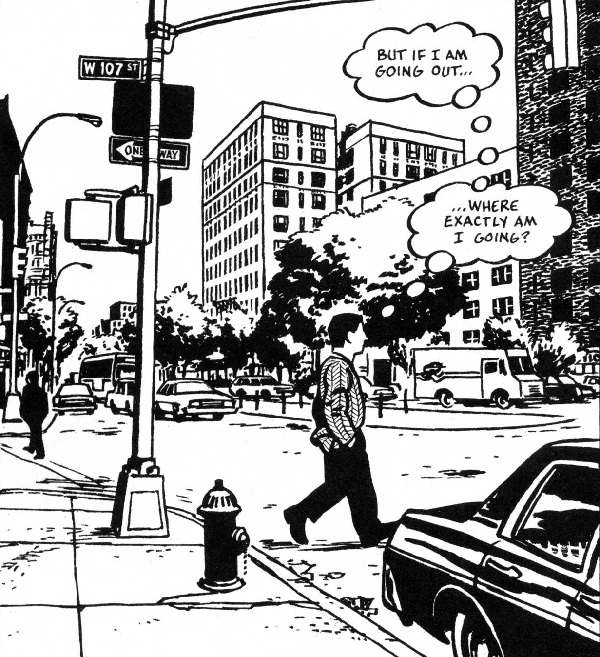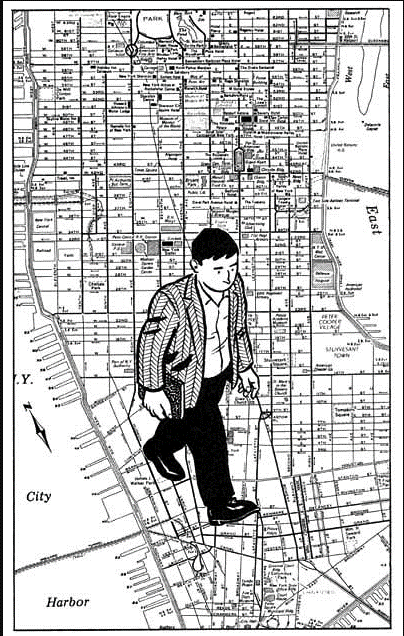From missing the pub to the political dimensions of walking. Thoughts, anecdotes and book recommendations on the hobby of the hour: taking a walk.
Pre-2020, meeting up for a walk with a friend or even an online-stranger was still considered quirky or exceptional, yet walking into a bar was the (boring) norm. However, situated in the first months of 2021, craving for nothing more than a midnight drink at the counter – or a visit to a museum, movie night at the theatre, or leaning on a mirrored wall’s table surmising amidst loud music what could be an eloquent elaboration on astrology or a rant on Frankfurt’s inaccessibility for a decent night life –, one becomes mindful of all those wistful eyes along rainy street corners. We are all remembering the barren nights of smoky winter coats resting on a radiator … while waiting yet again for another stroll in the park. What else is there to do?

Next to presented participatory hikes, auditive walks, and newly commissioned guided tours through cities, walking still holds a specific standing in art and literature. Thinking of taking a walk beyond the usual paths – the promenades of the flaneur, along city passages and circling in parks – walking off the beaten track may be the starting point to take a glance at books again. Cartography, the concept of “walking as an act of seeing, as an act of reading, as an act of walking”, noticing how a walk through the city may offer a slip through or a glitch in a city’s matrix, or simply walking as means for a cause, funnels the city-map as a grid of narratives in literature, film, and art. Musings on walking can also be understood as homage, and brings together enquiries on the reflection of this inconspicuous “medium” and thus ultimately puts it in the spotlight.
Virginia Woolf wrote that the best time for a night walk is winter; but from experience at best if you think of winter walking as a crisp, auditory experience without sharp gusts of wind. In “Night Walks”, Charles Dickens walks the streets of London in the early hours of the morning, unable to sleep because of an unnamed event that troubles him. He walked under bridges, past prisons, through graveyards, and across London's Covent Garden market where boys sleep under cabbage carts while church bells are singing in a distance. Wandering, then again, is not the boring activity everyone anticipates similarly. Walking the street goes along with a certain degree of visibility, invisibility and hypervisibility; saying that, mostly a female-passing body does not walk the city as a shadow. Their walk is often marked by apprehension and a different kind of vigilance – not only towards architecture, history and cultures, but also towards the city noticing her presence and potentially causing her harm. Teju Cole similarly notes that one cannot be a Black flaneur in a white terrain. Black people, he says, practice “psychogeography”, they wander the streets vigilantly, alert.


On the other hand, thinking of Paul Auster’s Daniel Quinn clad in the role as private investigator following his target on foot, only to return to the city’s map, spotting that the walking paths piece together to form a wordily clue that in the end will also indicate his fate. Peter Kien in Elias Canetti’s “Die Blendung” is building a map from the infrastructure of his library, canvassing Vienna’s bookstores, walking into and visiting each one once. Marked in red circles these bookstores stand in as stopping points along a relay race, omitting the actual query for books in lieu of going astray on the mapped cartography. Would my enquiry into mirroring my personal bookshelf bring me to the streets (in Frankfurt) I haven’t walked yet?
Beirut based artist Omar Mismar unknowingly to others circumnavigated the streets of San Francisco to move closer to his love interest, shrinking the distance visible on his dating app by walking around his neighbourhood. Meditative drawings occur, as well as itineraries off the beaten track. Hong-Kong based artist and curator Enoch Cheng is encouraging people to go on auditory walks, leading the participant on a voice-controlled stroll through the city’s boroughs. Stepping aside on the “bird’s path” may turn a regular evening walk into an auditory, visual, or emotionally brisk experience. The inspiration coming from literary cartography and mapping, as well as the output a walk can have, may open up the repetitive act of the “greet&feet”. Until lockdown is completely lifted, there are no real alternatives other than taking friends for a walk/hike/stroll/promenade or cycle around town.
ART OPEN AIR
Still fancy going for a walk?
Then off to the SCHIRN: the immersive installation by artist Caroline Monnet can now be seen in the Rotunda, which is open to the public.









